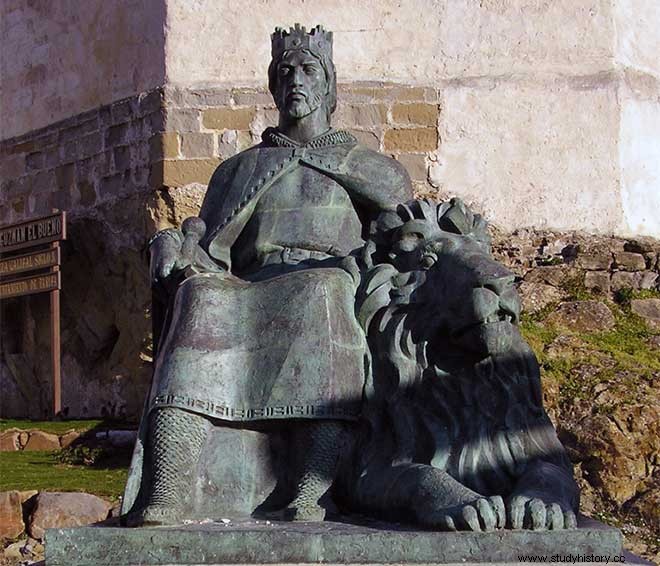Alphonse X (1221-1284), known as the Wise , had an outstanding intervention in the Castilian-Leonese military campaigns. In the year 1264 a Mudejar revolt broke out in Andalusian lands, quickly spreading to the kingdom of Murcia. While Alfonso dedicated himself to suppressing that uprising, his father-in-law, the King of Aragon, Jaime I , intervened in Murcia, in order to put out the flames of that conflict. Once the revolt was put down, Alfonso X ordered the expulsion of the Mudejars from Andalusian territory, many of them going to the Nasrid kingdom of Granada and others to North Africa . This decision had serious consequences, as it left many regions of Andalusia Betic uninhabited.
The most relevant event of the reign of Alfonso X was his aspiration to the Germanic imperial title, which was accessed by election and which had been vacant since 1254. He was endorsed by the fact that he was the son of a German, Beatrix of Swabia. An embassy from the Italian city of Pisa went to Castilla to encourage him to present his candidacy. The Pisans told Alfonso X that he was the most enlightened monarch in the Christian world. Alfonso X accepted that suggestion. In 1257 the king of Castilla y León was elected emperor, shortly after there was a first election, which fell to the English Ricardo de Cornualles. From that moment on, a bitter dispute began, known in the Hispanic sphere as the date of the empire , which lasted until 1273, when a new emperor was elected. The date of the empire , to which Alfonso X dedicated extensive efforts, was very costly for the taxpayers of Castilla y León. But in the end the Castilian-Leonese monarch did not get anything clean. On the other hand, Alfonso X had, in the last years of his reign, clashes, both with some sectors of the nobility and with his second son, Sancho. He claimed the inheritance of the throne, against the presumed rights of the infantes de la Cerda, sons of Alfonso X's eldest son, Fernando de la Cerda, who had died before his father.
Successions to the throne of Alfonso X «El Sabio»
Sancho IV (1284-1295), known as the Bravo, had to face his nephews, the infantes de la Cerda, who claimed the Castilian throne. These infants were helped by the King of Aragon, Alfonso III. However, this did not prevent Sancho IV from fighting the Muslims, specifically the Benimerines, who invaded the Andalusian coast in those years. In 1282, the Castilian monarch conquered the important square of Tarifa, later defended by the noble magnate Alonso Pérez de Guzmán, better known as Guzmán el Bueno . Sancho IV had a hard confrontation with who had been one of his main collaborators, Lope Díaz de Haro, Lord of Vizcaya. Lope Díaz de Haro was assassinated, in the year 1288, in the town of Alfaro, apparently by order of the monarch himself.
When Sancho IV died, his son Fernando IV (1295-1312) acceded to the throne. His young age required the establishment of a regency, headed by his mother, María de Molina. María de Molina defended the rights of her son against the aspirations of the infantes de la Cerda, while she faced other magnates from her kingdom, who had revolted led by the infante don Juan, brother of Sancho IV. Once Ferdinand IV was proclaimed of legal age, he managed to agree with the Aragonese the concord of Agreda (1304), which guaranteed Castilian domination of the kingdom of Murcia, except for the Alicante area. Also, Fernando IV launched some campaigns against the Muslims, focused on the area of the Strait. The result of those actions was the taking of the Plaza de Gibraltar. But the prompt death of the monarch marked the end of those campaigns.

